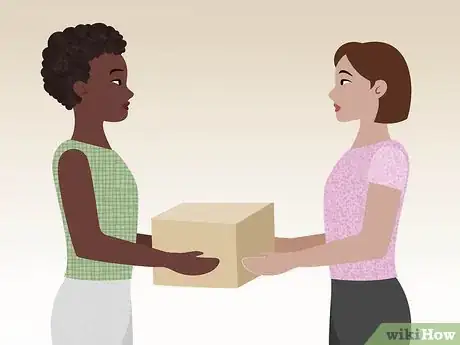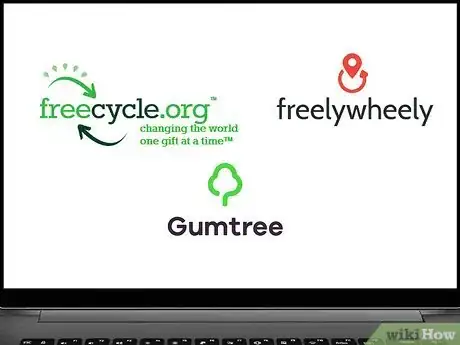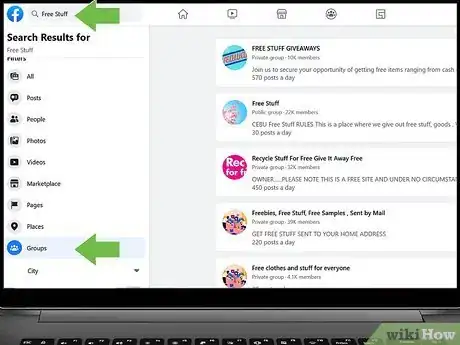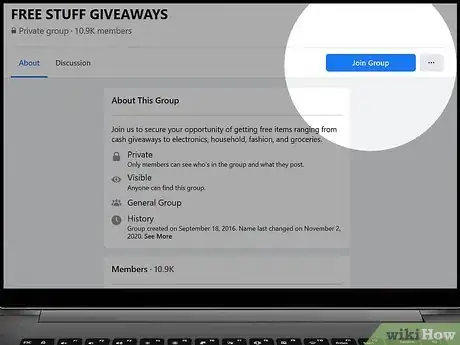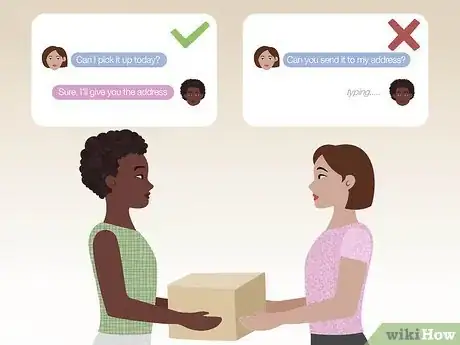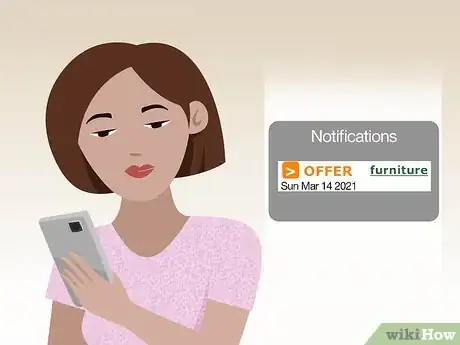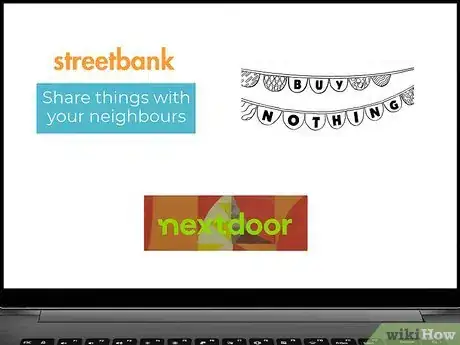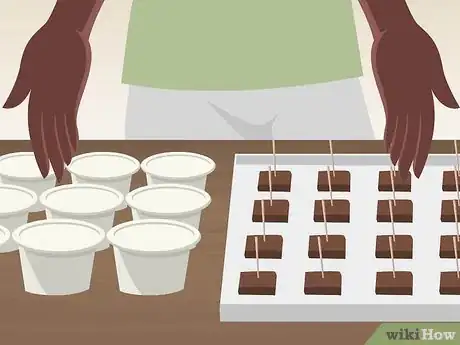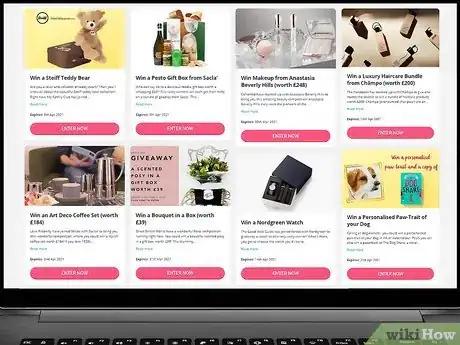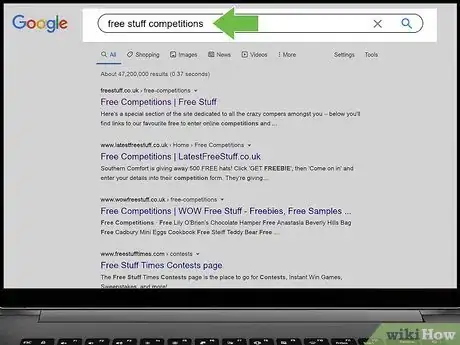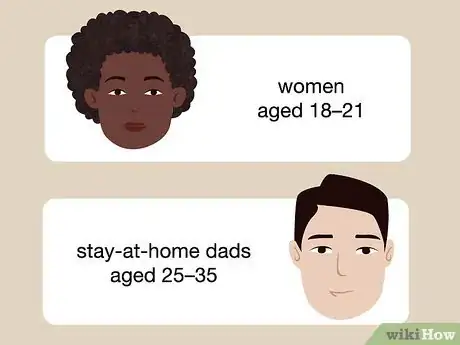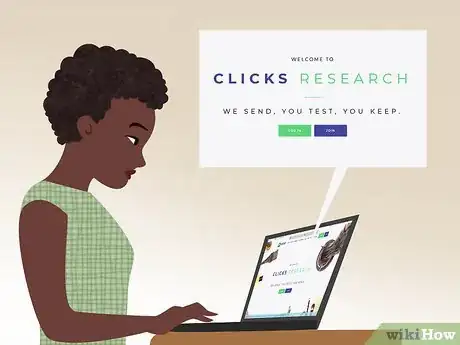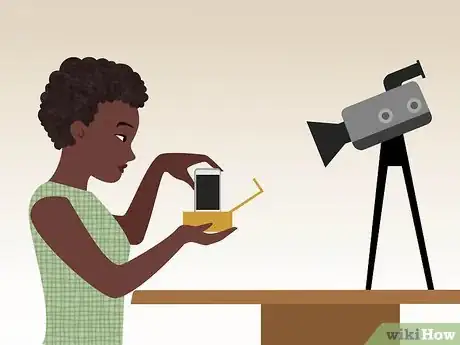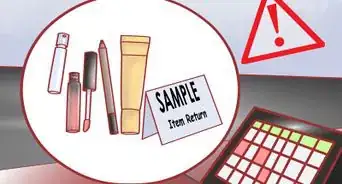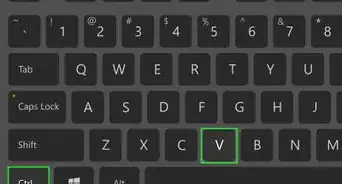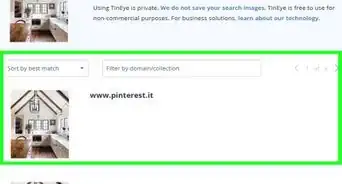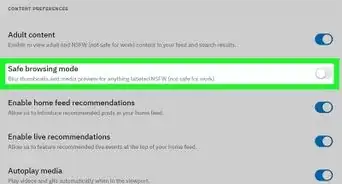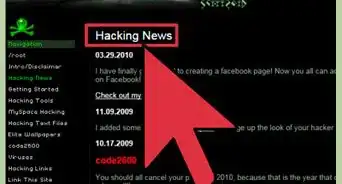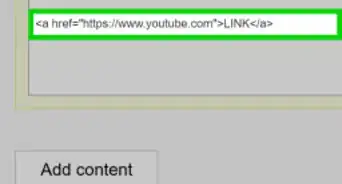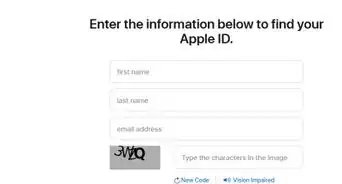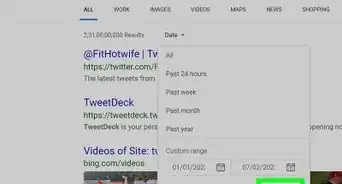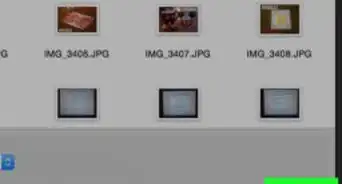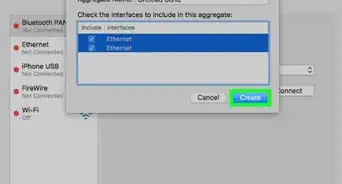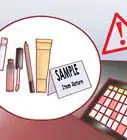wikiHow is a “wiki,” similar to Wikipedia, which means that many of our articles are co-written by multiple authors. To create this article, volunteer authors worked to edit and improve it over time.
This article has been viewed 10,117 times.
Learn more...
There are many things, new and second-hand, that can be acquired for free online. Websites and social media groups that exist to facilitate this are colloquially termed as the "free stuff" online community. Local community-orientated websites and social media groups enable people to search or request items to keep or borrow to use. Other items can be acquired for free through a variety of online sources by requesting samples, applying for offers, entering competitions and product testing. Taking advantage of the "free stuff" online community can be highly rewarding for anyone who would like to minimize their living costs while also recycling or upcycling and reducing the number of items that go to landfills.
Steps
Starting Freecycling
-
1Understand what Freecycling is. Freecycling, a portmanteau of the words free and recycle, is the requesting or offering of free, second-hand or surplus, items to use. Listings of currently offered items are posted online through websites and groups in social media and will, once you join, also allow you to request and offer free items from your local area.
-
2Find Freecycling websites. To identify which websites operate in your local area use an online search engine with location enabled to search for "Free Stuff Websites". Alternatively, you can try searching directly on Freecycle websites such as FreeCycle.org, TrashNothing.com and FreelyWheely.com. Free second-hand items can also be found on online marketplaces like GumTree under the category freebies.Advertisement
-
3Find Freecycling groups. Freecycle groups can be found online on social media such as Facebook. Searching for groups with the keywords "free stuff", "free things", "freebies" and "recycle" should reveal groups that operate in your local area. If you fail to identify groups close by, add the name of your city or region to the search criteria.
-
4Find Freecycling items. Once you have identified a website or group that operates in your local area you will be able to search or browse for items. To reply to posts, post your own requests or offers for items you will typically be required to join the website or group. Joining may require filling in a form with your details or, in social media groups for example, may be as simple as clicking a button to request to join.
-
5Request or offer Freecycling items. If you are posting a request or offering items there are usually different criteria to follow. These include clearly indicating whether the item is "wanted" or "offered". Be descriptive and clear in your post. Be sure to follow the website's or group's rules and never reveal personal information directly in public posts. If you receive replies to your post always be polite.
-
6Follow Freecyclying rules and guidelines. Generally in Freecycling communities there are also a number of rules that should be followed. These include:
- Firstly, the person who wants an item is generally expected to collect it. For an item you requested, either by answering a post or by posting your own request, you will, therefore, need to visit the location of the person who has offered you the item to collect it. Try to be as accommodating as possible to the person who has offered you an item with regards to the day and time of collecting. They are after all giving you something for free and may well be a neighbor who lives close by and you pass in the street from time-to-time.
- Secondly, it is considered bad form to message people who have offered items to ask them if they can drop it off at your location. This will frequently result in them breaking contact with you and you may lose the item.
- Thirdly, items are often requested by multiple people and it is expected that the person who has offered the item will, to be fair, contact those people in turn to arrange collection. If you are offering items for free you should also do the same. Remember that Freecycling communities exist as a consequence of the goodwill of people in your local area. They may be people you know or will get to know over time online.
-
7Be alerted of items offered. Items can be claimed very quickly on Freecycle websites and sometimes within minutes on social media. If possible it may help to enable alerts within your account so that you are notified as soon as offers are posted.
-
8Borrow items. If you are simply looking to borrow items to use from neighbors in your local area there are also websites that cater for this. These include websites such as Street Bank, Buy Nothing Project, and Nextdoor.
Finding Free Samples and Offers
-
1Understand what free samples are. Free samples are generally examples of a company's products to try. They are supplied as small quantities or offcuts of the product. For example:
- Food, toiletry samples, and cleaning products are provided in small containers. Confectionery will be supplied in reduced snack-like sizes and carbonated drinks in taster cans or bottles. Samples of perfume will be supplied in small vials, while products such as shampoo and moisturizer will be provided in sachets. All are intended as one-use quantities to give people a taste of the product as an incentive to buy more.
- Any material product that can be bought in different sizes or quantities, such as fabric, carpet, wallpaper, vinyl flooring, metal or plastic will be supplied as an offcut, a small and often roughly cut-to-size example.
-
2Get free samples. The means of acquiring samples will vary depending on what they are and why the company is offering them.
- You can use social media, such as Facebook or Twitter, for finding food, toiletry samples and cleaning products. Groups dedicated to finding samples or offers can be used to identify what is currently available. Companies launching products will often require you to like or repost their advert, follow their social media account or provide a comment on a post they have created.
- Numerous websites such as MagicFreebiesUK and WowFreeStuff can also be used to find samples or offers. Use the keywords "free sample websites" in an online search engine with location enabled to identify websites that operate in your country or region. Similar to social media groups sample websites will often focus on food, toiletry samples and cleaning products. They may redirect to the company's website in order to fill in a form or to social media to perform an action such as like or repost their advert, follow their social media account or provide a comment on a post they have created.
- To acquire sample materials such as fabric, carpet, wallpaper, vinyl flooring, metal or plastic you will typically need to visit the company's website. These types of samples can often be a valuable resource for upcycling or crafting projects. [1] [2] [3] The availability of these types of samples vary depending on the country and region you live in. In the UK, for example, carpet samples are readily available from almost every carpet manufacturer and retail seller. To request samples, visit their websites and identify the specific carpet sample you want. Look for a "request sample" button on the carpet's webpage, which will either add a sample to a free sample shopping cart, allowing you to collect several samples and then request them all at once, or redirect you to a webpage with a form to fill your details in. If you cannot find a "request sample" button, see if the website has a request samples section or an email address to send requests to. Once you have completed your request, the company will usually send you a confirmation email.
Entering Competitions
-
1Enter competitions regularly. Acquiring "free stuff" through competitions can be difficult to achieve. It can require regularly entering a high number of competitions in order to increase your chances of winning and receiving items. Don't expect to enter a few competitions and win. Winning will often require entering hundreds to win one or two items and to improve at competitions over time. While the chances of success are smaller, this is often offset by the possibility to win brand new and expensive items such as electronics, kitchenware, tools, sports equipment, furniture and many other types of consumer goods.
-
2Understand what competitions are looking for. Competitions will vary in what is required and their complexity to enter. Some will simply require you to register with your name, social media account or address while others will ask a question, invent a slogan, tagline or submit a form of media. Slogans, taglines and media will often be required to be specific to the company or product and portray a positive message about them. If a unique response is requested for the competition spend time to think about it. Get to know what the company and product are. Be original, clear in your message and attempt to appeal to as wide an audience as the product itself.
-
3Find competitions. To find competitions to enter, websites and social media groups that offer samples and offers can be searched as they will often also feature competitions. Additionally, there are websites, social media groups, pages and accounts that specifically focus on competitions by country or region. To find these search for "competitions" followed by the name of your country in an online search engine or directly on social media.
Becoming a Product Tester or Reviewer
-
1Understand what product testing entails. Free items can be acquired by applying to be a product tester. Companies will send you products to test over a period of time and you will be required to give feedback about the product. This may consist of filling in a form, survey or test online for products that may be in the early stages of development, are being tested for appeal to a certain market or you may be required to write a review of the product. Reviews are generally posted in a public online space such as Amazon. Once the testing is complete you are allowed to keep the product and may additionally earn points, vouchers or money.
-
2Understand that product testing is targeted. When applying to be a tester you will often be tested to verify if you qualify as part of the product's or company's target audience. Target audiences are usually specific and may for example be women aged 18–21, stay-at-home dads aged 25–35 etc.[4] If you don't qualify don't be disappointed there will be other products to test.
-
3Apply to be a product tester. To apply to be a tester it is best to apply through a website such as ClicksResearch or HomeTesterClub. To find websites that are searching for testers in your country or region use an online search engine with location enabled to search for "product testing websites". By joining a product testing website you will be able to search for many products you can apply to test and will often have product tests recommended to you for which you are eligible by the website based on details provided in your account.
-
4Apply to be a product reviewer. It may also be possible for you to apply for certain types of free items dependent on your profession and expert knowledge. For example, university lecturers and school teachers often qualify for free publications from book publishers. These are called inspection copies. To apply for an inspection copy of a publication check the publisher's website for information about inspection copies and what the publisher requires of you. You will generally be required to provide evidence of your employment and a university or school postal address for delivery of the book. Additionally, you will often have to agree to review the book, include it as part of book lists and/or recommend it to a specialist book supplier such as a university bookshop.
Warnings
- Never provide credit card numbers or passwords to anything that offers "free stuff".⧼thumbs_response⧽
- If personal details are requested for free items and they aren't directly relevant to receiving the items, do not provide them.⧼thumbs_response⧽
- If free stuff websites or social media groups provide built-in messaging use it as it will often mask your personal contact details.⧼thumbs_response⧽
Things You'll Need
- A computer or mobile device with internet connection.
- An email address.
- A postal address to receive items. Dependant on items you request this may need to be a home or work address. PO Box numbers will often be refused.
